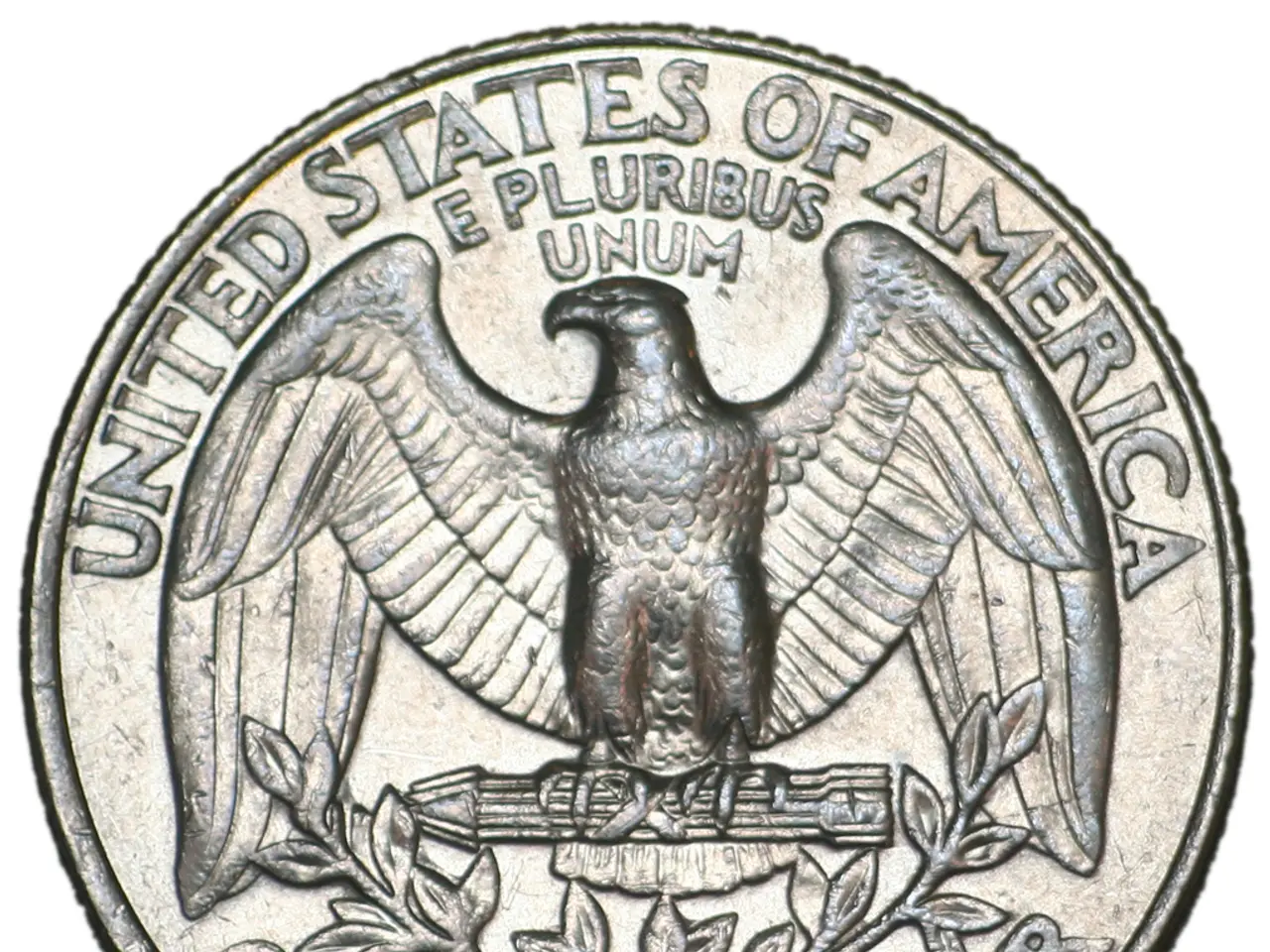Trump Warns India of Extra Tariffs due to BRICS Membership, Argues Economic Alliance as an Assault on the U.S. Dollar
In the ever-evolving world of finance, some significant changes are afoot. The BRICS alliance, originally formed in 2009, has expanded and is now working towards establishing a new financial architecture that includes a joint currency system backed by gold and other precious metals.
The alliance, which now comprises 11 members including Brazil, Russia, India, China, South Africa, Indonesia, Egypt, Ethiopia, Iran, Saudi Arabia, and the United Arab Emirates, is aiming to reduce reliance on the US dollar.
One of the key updates on the BRICS status and currency efforts is the expansion of the alliance. In 2024, the group welcomed Iran, Egypt, Ethiopia, the United Arab Emirates, and later Indonesia in early 2025. This expansion has broadened the geographic and economic scope of the BRICS alliance.
BRICS nations have been intensively accumulating gold reserves and integrating gold into their financial mechanisms. Russia and China, due to their significant gold production, play major roles in this strategy. There is evidence that China has moved to back the yuan with gold convertibility in international trade. Russia has added silver into its strategic reserves, signifying a diversified precious metal backing.
Rather than releasing a single BRICS currency immediately, the alliance is building a multi-currency settlement framework where each member’s currency value is partially determined by its gold reserves. This structure allows trade settlements in national currencies benchmarked against gold, preserving monetary sovereignty but bypassing US dollar dominance.
The BRICS currency project is targeting an operational launch in 2026-2027, with ongoing developments in cross-border payment systems under the "BRICS Pay" project. This involves blockchain technology and integration with central bank digital currencies (CBDCs) of member states, aiming for an interoperable financial system that bypasses traditional settlement systems like SWIFT.
The creation of a gold-backed common currency and alternative financial infrastructure has sparked geopolitical tensions, such as threats of additional tariffs from the US on India due to its BRICS membership. This underscores the challenge BRICS poses to the dollar-centric global order.
As of mid-2025, while BRICS has not yet launched a fully unified gold-backed currency, it is building a gold-backed multi-currency system for intra-BRICS trade settlements and advancing towards a digital currency project expected by 2026-2027. These efforts collectively aim to circumvent international reliance on the US dollar by establishing an asset-backed financial parallel system.
[1] BRICS Expansion and Cooperation: https://www.bricspost.com/news/brics-expansion-cooperation-11-members-2025/ [2] Gold-Backed Financial Strategy: https://www.bricspost.com/news/gold-backed-financial-strategy-brics-alliance/ [3] No Single Currency Yet, But a Multi-Currency System Backed by Gold: https://www.bricspost.com/news/no-single-currency-yet-but-a-multi-currency-system-backed-by-gold-brics-alliance/ [4] Currency Project Timeline and Technology: https://www.bricspost.com/news/currency-project-timeline-and-technology-brics-alliance/ [5] Political Context and Global Impact: https://www.bricspost.com/news/political-context-and-global-impact-brics-alliance/
- The BRICS alliance, in its expansion to 11 members, is seeking to reduce reliance on the US dollar and potentially challenge the global dominance of the US dollar, as evidenced by the development of a multi-currency settlement framework that may bypass traditional settlement systems like SWIFT and move towards digital currency projects. [4]
- Amidst this financial alteration, the BRICS alliance members, such as Russia and China, have been accumulating gold reserves and integrating gold and other precious metals into their financial mechanisms, hinting at the creation of a gold-backed financial system that could disrupt the current cryptocurrency and policy-and-legislation landscape. [2]
- As the BRICS goal of launching a gold-backed multi-currency system for intra-BRICS trade settlements and progressing towards a digital currency project approaches, the alliance might significantly impact general news headlines, with possible ramifications for altcoins and blockchain technology as well as the broader politics and policy-and-legislation environment. [1, 3, 5]







